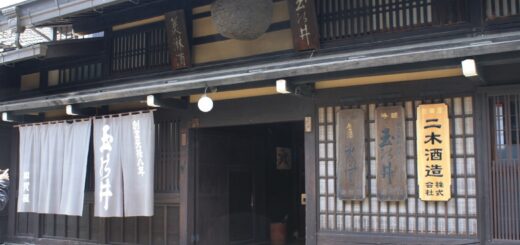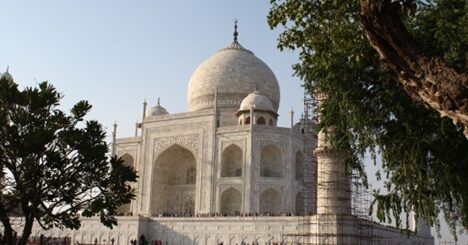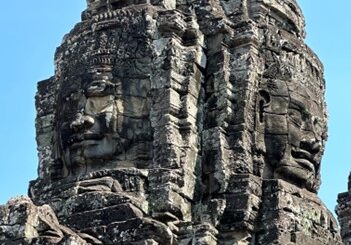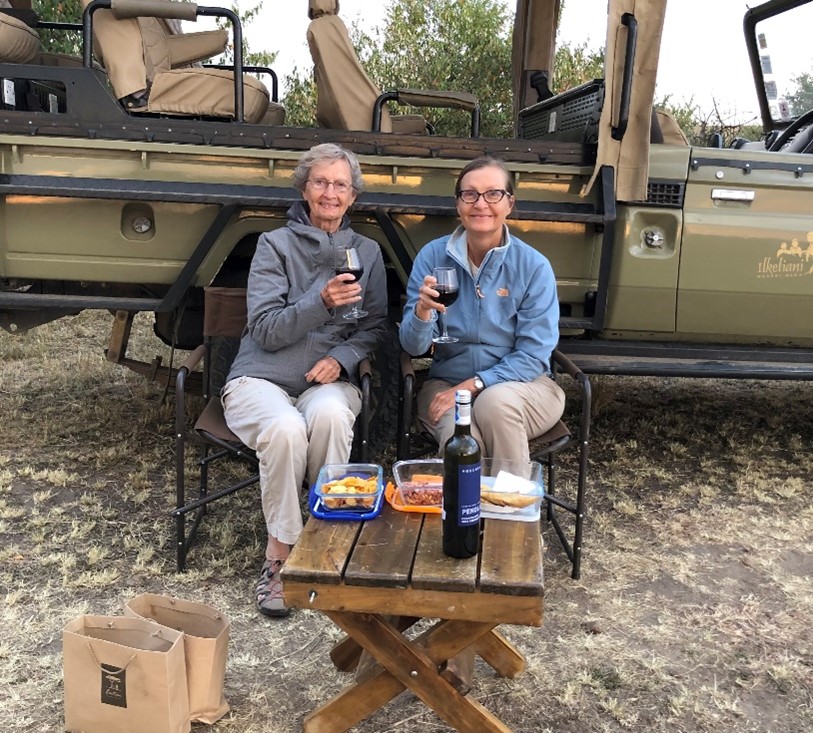Beijing
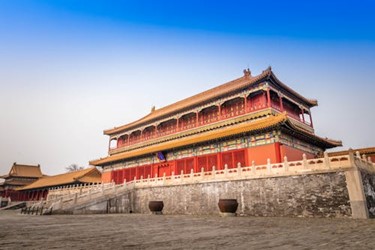
Travel Advice for Seniors: Beijing
One of our first long trips abroad, the mysterious country of China was calling. We coupled a five-and-a-half-week trip to China with a stay in Hong Kong and Malaysia. Our goal was to see the main sights of course, but also to see some less visited sites that have a historical feng shui background. Feng Shui is, simply put, the study of land forms and how they relate to one’s dwelling on a macro and micro level. It is quite a big deal in China and several other Asian countries, which we were about to find out.
We had booked a private tour since we were going for so long and to some fairly obscure places. Also, there was a pretty serious language barrier, and traffic is an entertaining nightmare of vehicles. A small group tour will hit the highlights, but a private tour is scheduled at your own pace and with usually a different guide in each area, who can provide you with their anecdotes and favorite eating establishments. A private tour is well served in China.
A few observations about China: Beijing and Shanghai were very modern and bustling cities, and it was obvious that effort had been made to “put best foot forward”. But when you go out into the smaller cities like Xian, Guilin and other less touristy areas you can really see what the country is like and how the people live. You got the impression sometimes that there is a façade that China wants you to see and then there is the reality. It was interesting probing this reality.
Also, you could tell that our guides all had government training and that certain subjects were not discussed (we definitely stayed away from political discussions). Also, they were required to take us to a certain amount of retail shops, most of which were very large areas of jewelry, etc. even if we didn’t really want to go. For one of the shops we visited, the salespeople were sitting lined up against a wall in the dark (the lights were on motion sensors) waiting for customers to appear, when they would all spring into action and try very hard to sell you something. It was odd, but in China, everyone, no matter how old works. We saw people that should have been retired and taking it easy, changing out potted plants at parks in Beijing.
Also, we were not prepared for the attention that we would be getting from the locals. It wasn’t so bad in the heavily touristed parts of the larger cities, but in the smaller areas, people would come up to us frequently and ask for a picture with us, or would touch our hair and so on. In fact, at Xian, we were sitting waiting for our guide to come back at a nice fountain and agreed to have our photo taken with a teenage girl. Before you knew it, there was a whole line of people waiting to have their photo taken with us! While these were mostly teens and it was okay for a few people, this is also something to beware of in this day of photoshopping.
One more important thing: You are being monitored. I took my laptop for business reasons and it never worked the same after my return. A friend who worked in China frequently at the time called it “the great fire wall of China” and he wasn’t wrong.
Also, surprisingly, many locals were shocked that Mom was actually my Mother and older than me. Everyone thought we were sisters, which is fine and fun, but we wondered why the fascination. We found out later from one of our guides when asking about small town life that at the time of our visit, most people don’t live as long and are not in near as good of shape as we were for our ages. Kind of burst Mom’s bubble, but something to think about. Of course, I always gracefully responded with “I only hope I can look as good as Mom does when I am her age”.
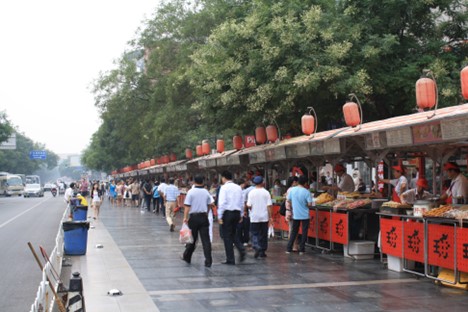
A few notes on food: Outside of the main cities and even in them, we relied heavily on our guides to check our dining options. I decided to go vegetarian and seemingly had numerous platefuls of what looked like grass and probably was. That said, we did have superb Peking Duck (and yes, they do serve the duck brain boiled as a tea), fantastic dumplings in Xian and lovely beer fish in Guilin. Some of our funnier moments were around food, such as Mom’s attempts to eat with chopsticks and Mom going rogue and ordering a plate full of pork fat. Especially in small towns, be prepared for an audience watching you eat, locals spitting fish bones on the floor of the restaurant and also for interesting menu items that we wouldn’t think of eating in the States. Also, it is important to note that the Chinese believe that most Westerners have a great deal of wealth and a show of wealth in China is to order many, many bowls of food and to leave some behind. This goes against our personal habits of eating light and not wasting food, but this is a real thing in China.
Also, don’t drink the water and make sure to take plenty with you if it is warm out. There is a lot of walking, especially at historical sites. Also, we steered clear of fruit and lettuce (items rinsed in water) until we had been there for at least a week to allow our systems to acclimate. Don’t forget to carry stomach ache and diarrhea meds with you close by.
Finally, a Mom note on the lavatories: Be sure to ask your guide about using Western style toilets, as you will find the bulk of toilets, especially in off the beaten path areas are squat style. Hard on the knees and you can get your feet wet if you aren’t careful. And bring your own toilet paper just to be safe. You may also want to gauge the timing on your lavatory stops in advance, as public toilets are not common outside of the major tourist areas.
So on to the excitement of Beijing! We flew through Hong Kong (the old airport where you flew down from a mountain top and landed on the shortest runway ever!), and it was pretty much two-days of flight/travel. Instead of conking out with jet lag, we reset our watches to local time and headed out to see the sights. We only had four full days in Beijing and wanted to make the best use of our time.
First stop was the UNESCO World Heritage Site, Summer Palace, a retreat for the royals when the city got too hot in the summer. It has one of the most well-preserved imperial gardens in China and is a tranquil area of lakes, gardens and buildings. It was rebuilt for the Empress Dowager Cixi, one of the most powerful women in Chinese history. While she did have sons, she was a “behind the scenes” part of the Chinese government in the late Qing dynasty for almost 50 years. Don’t forget to take a look at the marble boat/barge. Also, note that in a lot of these historical sites, there are a lot of steps and they cover a lot of ground with their many buildings and temples. Wear comfortable shoes and go at your own pace.The palace has accessible parking, entrances, restrooms and walkways.
We also stopped by the Yonghegong Lamasery temple or the Lama Temple. It is known as the monastery of a particular school of Tibetan Buddhism. It has a gorgeous intricately painted gate and there are the typical prayer wheels and incense urns. The architecture is most striking at Chinese temples and imperial buildings. The color of tiles and decorations at the eaves indicate royalty or other establishments. The roofs are all tiled and lacquered with heavy decoration at the roof lines and the eaves. Every part of the architecture and interiors have meaning. The temple is partially accessible with some steps to negotiate.
Buddhist temples will also all have a statue of Buddha with candles, flowers and offerings, plus an area for meditation and sometimes areas for petitioners outside or inside featuring prayer wheels and incense urns. It is proper etiquette for you to remove your shoes, cover your shoulders and wear modest clothing, be quiet, don’t point, don’t touch. Ladies must be careful not to touch the monks.
We also visited the lovely Fragrant Hills temple, park and grounds, a home and recreational area to Chinese emperors for over 900 years. Following the peaceful walk, we stopped by the Ancient Bell Museum and wrapped up with a walk past the Wangfujing Dijie shopping area. This area is full of street vendors offering fresh prepared food of all sorts including octopus and other seafood delicacies.
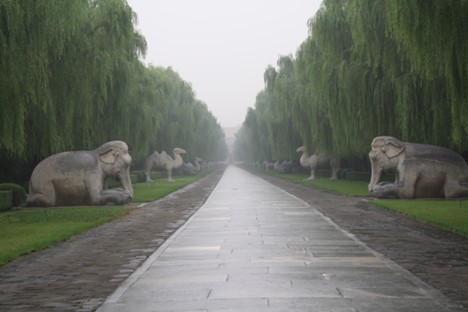
The second day was a visit to the Ming Tombs and the Great Wall. The Ming Tombs are reached by walking along the sacred way, which has life-sized camels and elephants made of stone. It was a misty and cloudy day, and you could really feel the history and the “ancientness” of the tomb site. One of the thirteen tombs was on display, that of Ding Ling, but it was noted that many of the ancient tombs were left unopened until better technology is developed so that the fine artifacts can be preserved from air entering the tomb upon excavation. The Ming tombs are not generally accessible, though a few pathways are.
The site was very large and it was a fair bit of walking to see the sights and to appreciate the feng shui of the area (location of mountains and water). There is also symbolism everywhere in the design of the buildings and decoration. Perhaps not a top destination for all to visit with limited time, but it was rewarding for its sense of history and peacefulness.
On to the Great Wall. There is a section of the Great Wall very close to Beijing and you shouldn’t miss the opportunity to go up the hand-built stairs (high and uneven steps to keep the enemy’s horses from climbing) to take in the view and just to say you have stepped on the Great Wall of China. There will be a large crowd so be prepared. There are a few entrances, ramps and elevators that are accessible.
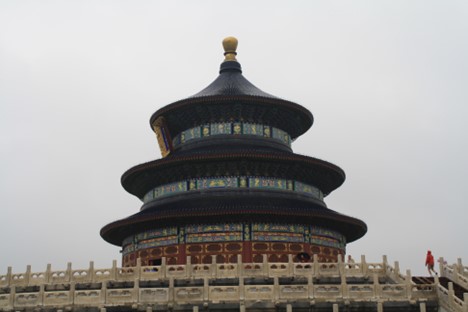
Third day a trip to the Temple of Heaven was in order. This unique temple is a round structure that is not really religious, but more of a Taoist temple where the emperors would give yearly thanks for a bountiful harvest. It is also a UNESCO World Heritage site. The architecture and decoration is stunning. The roof is blue o represent the sky and the yellow interiors were indicative of imperial use. The temple has accessible parking, ramps, walkways and restrooms, though some of the walkways are steep.
Tiananmen Square was next on the agenda. It is a huge square with Forbidden City and the Gate of Heavenly Peace on one side and the Hall of People and Chairman Mao’s Mausoleum in the center. The Hall of the People is used for governmental ceremonies. And yes, Chairman Mao is interred here in the Mausoleum and his body can be seen on a daily basis.
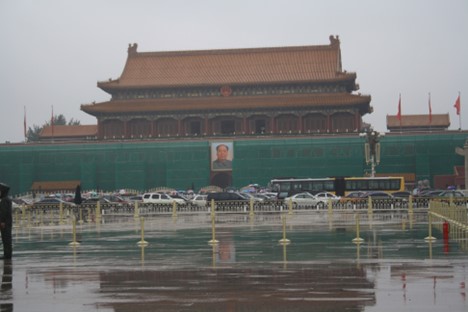
On to a major trip highlight, the Forbidden City! The Forbidden City is a vast network of beautifully crafted buildings, the residence of Ming and Qing dynasty Emperors, and the center of political power in China for over 500 years. Very well preserved, it is probably the most famous palace in all of China. Don’t miss Empress Cixi’s bedroom, the Throne Room, the small temple the concubine’s used for worship above the rockery. The sheer scale of the Forbidden city and the thousands of rooms and buildings will take the better part of an afternoon to truly grasp. Take water and wear comfortable shoes. There was a small park to the north side of the Forbidden City that our guide took us to from which we could see the entire complex and how huge it was. The Forbidden City has some accessible entrances and parking lots, but the ramps and courtyards are difficult to navigate with steep ramps and uneven surfaces.
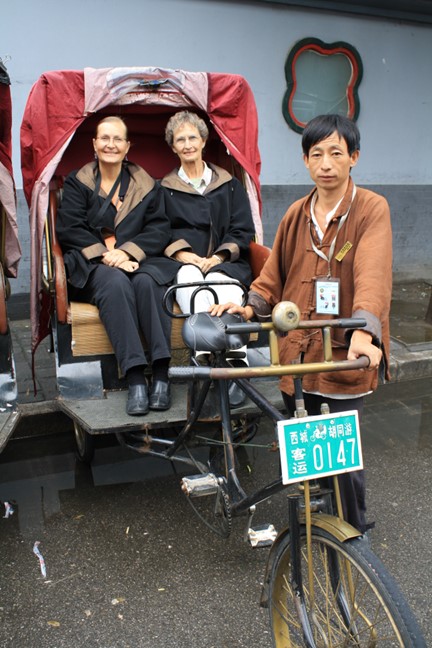
Last day in Beijing started with a relaxing rickshaw ride (relaxing for us anyway) through some of the old historical quarters and hutongs of the city. We made a stop by Bei Hai Park, another well-groomed imperial garden and landed at Prince Gong’s mansion. This was a very well preserved and tended garden and buildings. The buildings are painted with incredible intricacy and the lily ponds and landscaping are magnificent. Our final stop was at the Confucius Temple and the Drum Tower, where the city kept time for the citizens. The mansion is generally accessible, with wheel chairs available for rent, however, please check in advance.
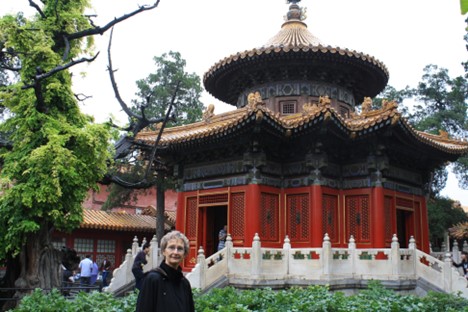
The Confucius Temple is the second largest (largest being in his hometown of Qufu), first built 1302. Known as one of the great teachers of China, Confucius taught core beliefs of respect, harmony, justice and loyalty. While Confucianism is not a religion, his teachings are well-rooted in Chinese life. The main halls and courtyards are accessible.
While we did have a great time learning and appreciating the culture and history of Beijing, we had to move on to Xian for the next part of our adventure. Before leaving though, do make time to stop by a family-owned tea house for a lesson on making a proper Chinese tea and to pick up some to take home. We also tried some Mongolian Hot Pot, which was very good, the Peking duck (all parts), and also took in some Chinese Opera at the Zhengyki Theater. A packed schedule to be sure, with little time for jet lag recovery, but you have to make the best of your short time in each location. We could’ve easily spent a week or more in Beijing.
Where we stayed: Grand Soluxe Tiantan Hotel, breakfast included.Accessible common areas.
How we got there: Flew from US to Beijing then private transfer to hotel.This was part of a five-and-a-half week private tour through China and Malaysia.
General Accessibility Information: Most large cities are somewhat accessible, particularly hotels, some transportation and some major sights. Outside of the major cities, accessibility is generally less frequent to find. Also, be prepared for curious onlookers. Call in advance to verify and make specialty arrangements.See our sections on specialty apps and accessible travel for more on accessibility assistance.

